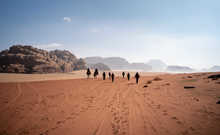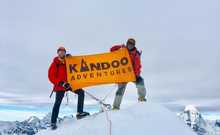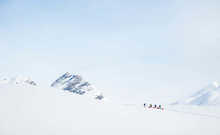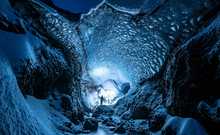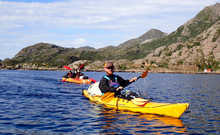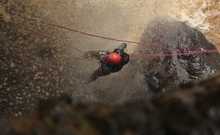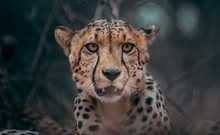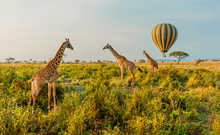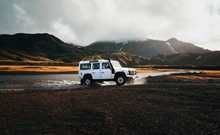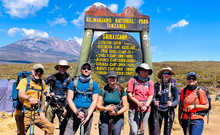Kilimanjaro Gear List
If you’re a regular adventurer, you may feel well equipped
for climbing Kilimanjaro however for some, this could be your very first big
adventure trip. The word ‘climbing’ only refers to the fact that Mount
Kilimanjaro is almost 6,000m high, rather than there being any technical
climbing involved. Trekking up Kilimanjaro is a more accurate description of
the journey to the summit but sounds far too sedate for the experience of
conquering this majestic mountain.
Kilimanjaro trips will take you through five different
climate zones, each with their own unique microclimates, terrain and
temperatures. Kilimanjaro
weather is fairly predictable and understanding what to expect before you
go will help you pack for the expected conditions forecast for the time of year
you plan to visit.
No technical climbing gear is required for your Kilimanjaro
trek. The most important items on your Kilimanjaro kit list will be a good,
well-worn in, pair of walking boots suitable for climbing Kilimanjaro and some
trekking poles. Whether you have used trekking poles before, or you are new to
them, our blog on how
to use trekking poles will help you pick the right ones for your trip.
Alternatively, you can hire these before you start your trek.
Below you will find a packing list for Kilimanjaro including
everything you need to climb Kilimanjaro from top to toe. Where possible we
have included links to gear that we personally use and recommend.
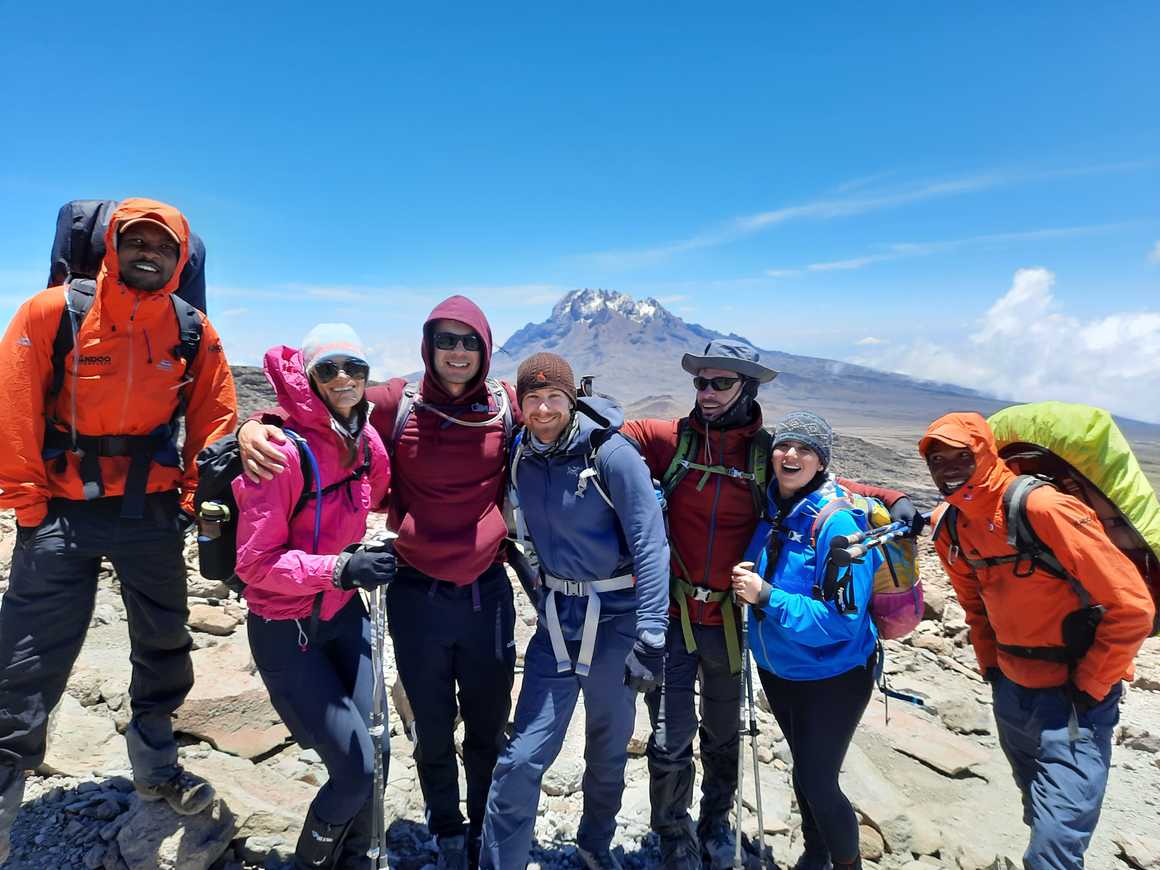
Upper Body
Let’s start with clothes for climbing Kilimanjaro. As any
trekker worth their salt will tell you, getting the right Kilimanjaro clothing
is paramount to a successful climb. Clothing is of particular importance when climbing
Kilimanjaro as the ascent passes through 5 climate zones. Whilst the base of
Kilimanjaro has a breezy warm tropical climate, the summit is freezing.
Layering is therefore critical during your Kilimanjaro hike. Not only this, but
each layer must consist of a wickable fabric. Unlike other fabrics such as
cotton, wickable fabric allows moisture to pass from one layer to the next. Our
Kilimanjaro gear list below details what types of upper body layers you might
need and how many of each.
Thermal or fleece base layer (x1)
An obvious place to start with the kit list for Kilimanjaro
is thermals and base layers. As you get higher up Kilimanjaro, inevitably the
weather gets colder. Here you will need a lightweight base (or skin) layer
ideally merino wool, not cotton, as merino base layers help to regulate your
core temperature and are highly moisture wicking fabrics. This means it pulls
moisture away from your skin by absorbing it into the fibres which then
evaporate through the exterior.
One pair of top and bottom base layers should be enough for
any treks under a week, however, for any treks over 7 days (unless you’re
planning on stinking the joint out) we would recommend at least 2 pairs. We
recommend Smartwool lightweight base layers or Icebreaker oasis base layers.
Long sleeve shirt/tshirt - light or medium weight, moisture wicking (x 2)
Short sleeved shirt/tshirt - lightweight, moisture wicking (x2)
Warm and comfortable walking trousers are crucial items of
clothing for Kilimanjaro, where you will be trekking above 4,500m and the
temperature drops dramatically. Key things to look for in walking trousers
include a sun protective and water-resistant material, inner fleece material
and a quick drying polyester outer layer for warmth. Convertible trousers
from Craghopper work well as do good quality ski pants.
See Smartwool or Icebreaker base layers.
Fleece or soft shell jacket (x1)
For the colder sections of the trek your second layer should
be a good quality fleece. Polartec is the best material and comes in 100s, 200s
and 300s. These numbers refer to the weight of the fleece, with 300 being the thickest
and intended for retaining heat. Fleeces that are 100 or 200 weight are not
micro fleece but neither are they heavyweight and are better than 300 weight
fleece for when you’re active. We would recommend the middle weight (200) as it
is neither too light nor too heavy - ideal for Kilimanjaro. A fleece with a
hood is also a bonus. Helly Hansen and The North Face offer good quality and affordable
fleeces.
Insulated jacket - down or primaloft
Having a wind and rainproof jacket is a key item in any gear
list for Kilimanjaro for obvious reasons. However, the choices can be a little
overwhelming. Insulated jackets essentially come in two categories - down or
synthetic. Whilst down jackets are generally lighter and warmer, they are far
more expensive and, depending on price, more susceptible to moisture. There is
no right or wrong here, it comes down to personal preference, budget and
versatility. We recommend The North Face Nuptse, Resolve or similar.
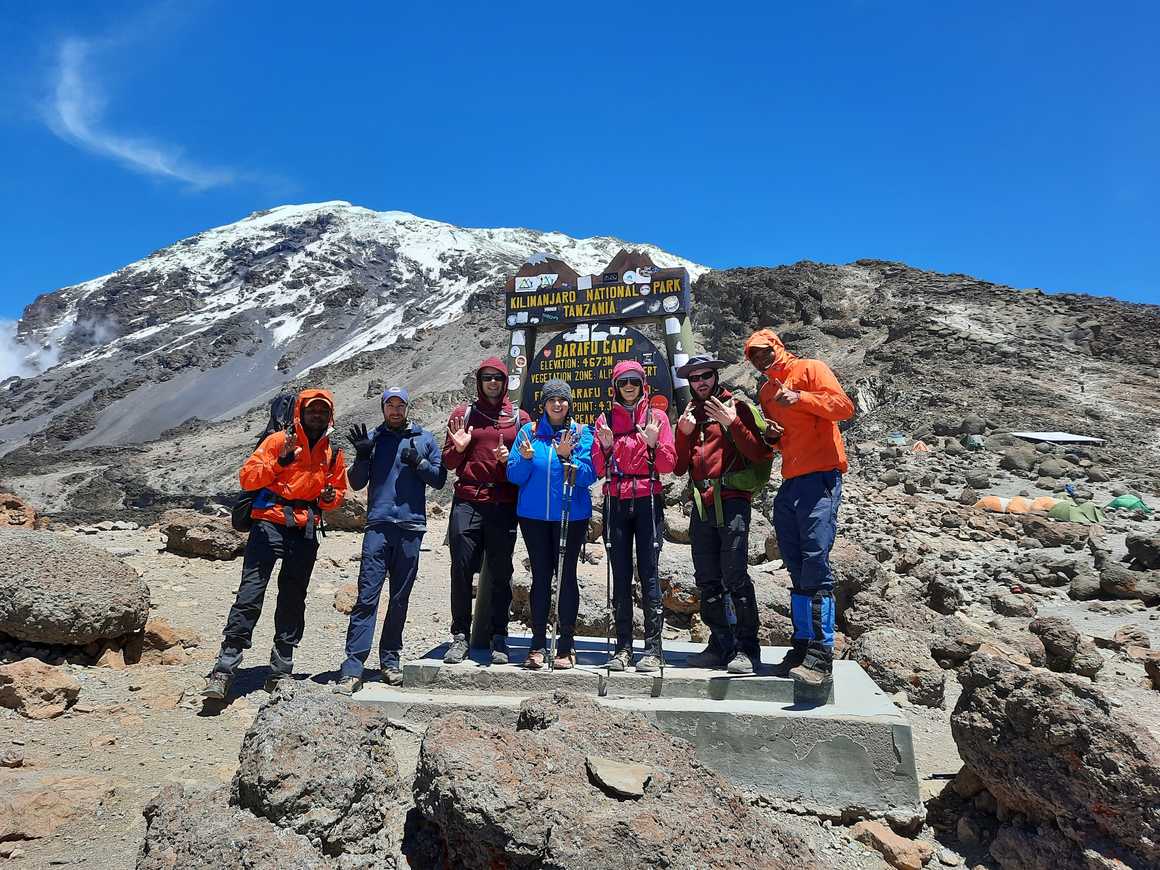
Lower Body
Leggings - thermal or fleece base layer (x1)
Trekking trousers - light or medium weight (x2)
Warm
and comfortable walking trousers are crucial items of clothing for Kilimanjaro,
where you will be trekking above 4,500m and the temperature drops dramatically.
Key things to look for in walking trousers include a sun protective and
water-resistant material, inner fleece material and a quick drying polyester
outer layer for warmth. Convertible trousers from Craghopper work well as do good quality ski pants. See Smartwool or Icebreaker base layers.
Hands
Gloves - lightweight, quick drying fabric (1 pair)
Gloves - heavyweight, insulated, preferably water resistant (1 pair)
Good gloves are paramount as your hands will be completely
exposed when gripping your trekking poles. In terms of the ultimate Kilimanjaro
packing list items, protecting your extremities is essential to the enjoyment
and comfort of your whole trip. We recommend taking two pairs of hand
protection - one lightweight thermal pair of gloves with great wicking
properties (avoid cotton) and one heavyweight, waterproof pair that provide the
shell protection in the colder sections of the climb. We recommend Black Diamond Guide Gloves, Outdoor Research Gloves and Dakine Scout.
Footwear for Kilimanjaro
Trekking boots
Training shoe or similar
Taking your boots off after a long trek is a great feeling,
however, you still need to get around the camp and, if you’re anything like us,
go for a little explore. Therefore, some basic training/hiking shoes are the
best way to do this. Make sure they're still good quality and lightweight - you
can't go wrong. See Merrell, Columbia, Keen or Scarpa.
Mid-weight trekking socks (x5 pairs)
Breathable, high-wicking liner socks (x3 pairs)
Thermal trekking socks for summit night (x1 pair)
Just
like shoes, socks are very important items of clothing for Kilimanjaro. Once
again, avoid cotton or cotton blended socks as they don’t allow the feet to
breathe. We would suggest taking at least 5 pairs of Merino Wool trekking socks
along with high wicking thermal socks for those colder sections of the trek -
especially at night. We recommend Point6, Smartwool, and Bridgedale.
Headgear
Warm beanie style hat - knitted or fleece
An absolute must for the cold summit night on Kilimanjaro, a lined and fleeced beanie will keep your head and ears all snugly and warm.
Neck gaiter or scarf - just so many uses!
Often overlooked when preparing a packing list for
Kilimanjaro, neck gaiters and scarves are great multi-purpose pieces of
clothing that should be on your Kilimanjaro gear list. Not only will they
protect your neck from the freezing wind, but also from the blistering sun and
they are incredibly useful in dusty weather as it can be wrapped around your
nose and mouth for protection. Make sure it is lightweight, quick-drying,
breathable and absorbent.
Sun hat - preferably wide-brimmed for protection
Keeping your head cool during the hotter moments of trekking is vital, as is protecting your face from sun burn. Therefore, we recommend a wide brimmed hat, preferably with a neck cover and made of a breathable material.
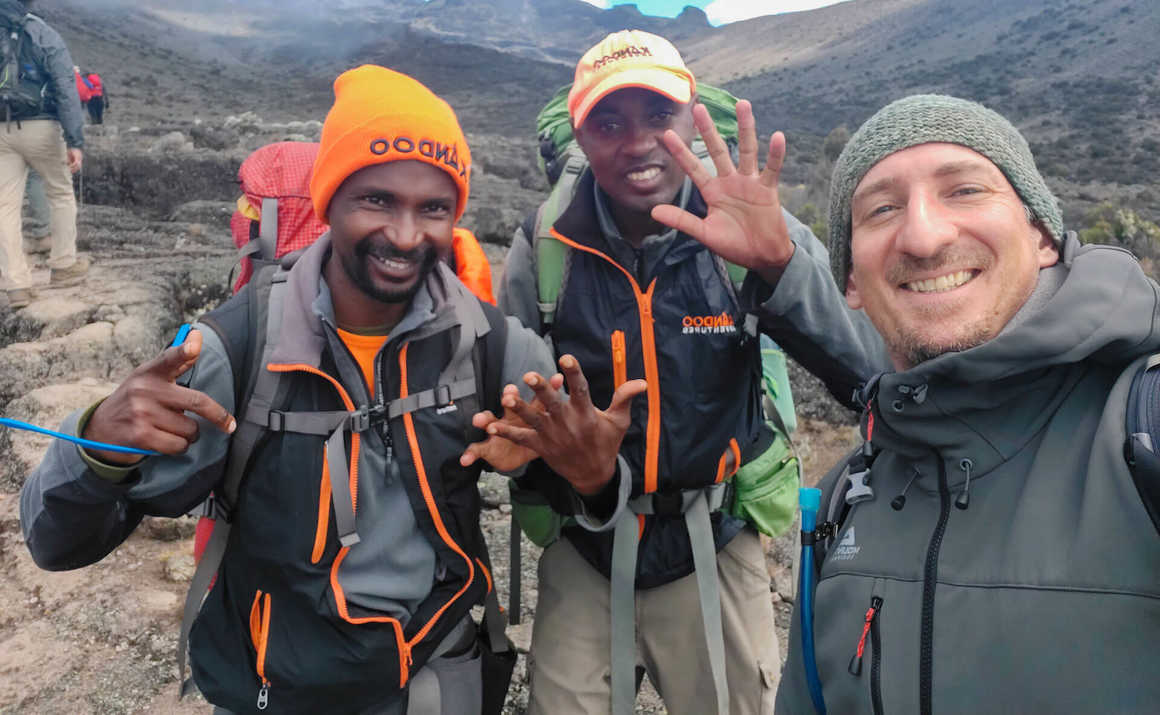
Equipment for Kilimanjaro
Small Rucksack or Daypack
Now, on this Mt Kilimanjaro packing list, we move onto the
essential equipment. As you'll be carrying your daypack, it’s important to keep
it small and lightweight (25-30 litres). Your daypack will be used to carry
water and personal items such as sunscreen and snacks etc. For more information
on what
you’ll need to pack in your daypack for Kilimanjaro, read our blog.
Look for daypacks with compression straps to reduce stress
on your back, rain covers and side mesh pockets for easy access. Osprey and The North Face make great daypacks. For the safety
conscious you may want to check out this Anti-Theft Backpack And Bag Protector.
Waterproof duffel bag
As it holds all of your trekking gear, this is one of the
most important pieces on our Kilimanjaro kit list! Because your duffel bag will
be carried by porters, make sure it weighs no more than 15kg and has a soft
bottom (approx. 80-100 litres). This weight restriction includes your sleeping
bag, whether you bring one with you or you rent one from us. Make sure your bag
is waterproof, has a strong zipper system and hand and shoulder strapping
system for extra versatility. We recommend North Face or Helly Hansen
waterproof duffels.
Sleeping bag for Kilimanjaro
One of the top priorities on your kit list for Kilimanjaro
should be a sleeping bag. Regardless of season, a warm sleeping bag is critical
when climbing Kilimanjaro as no matter the time of year, it’s always freezing
at the top.
In terms of which is the best sleeping bag for Kilimanjaro
out of the two types of sleeping bags (down and synthetic), down is warmer,
lighter and more comfortable, however, that comes at a higher price. We highly
recommend down, especially if you are considering trekking further in the
future. Look for a mummy shaped sleeping bag with at least 4 season or -20
degree Celsius rating (remember the warmer the better). Remember you can rent a
sleeping bag for Kilimanjaro to save space in your checked luggage, especially
if you’re not likely to use it again.
We provide a comfortable foam mattress, but you may like the
additional comfort and warmth of a Thermarest sleeping mat. These can be bought
on Amazon.
Trekking poles
No Kilimanjaro gear list would be complete without trekking poles. With an average trek length on Kilimanjaro of 7 days, your legs and joints are put under a lot of stress. The best way to reduce this is by using a good set of trekking poles. Things to look for - weight (heavier is better for longer treks, adjustability (look for fully adjusting), material (lightweight aluminium or carbon fibre is best) and grip (we would suggest rubber or foam for Kilimanjaro). We recommend trekking poles from Black Diamond. You can also rent trekking poles from us in Tanzania, just ask our friendly team when booking. For more information on how to use trekking poles, check out our blog.
Water bottle or hydration pack for Kilimanjaro
You
need to stay well hydrated and should drink between 2-3 litres per day. We ask everyone
to carry 3 litres of water every day. We recommend Camelbak Water Bottles or Platypus Hydration Bags. The drinking pipe on a hydration pack will start to freeze above 5,000m, so even if you rely on a water bladder for the rest of the climb you will need a water bottle as a back up for summit night.
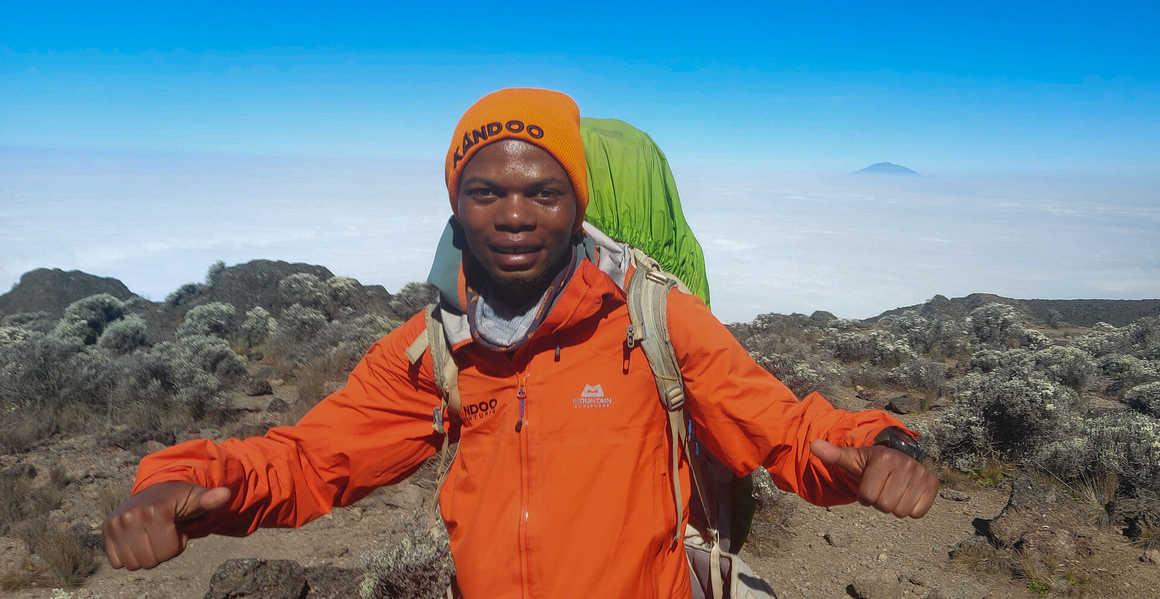
Accessories
sunglasses
head torch
sunscreen and lip balm
- Don't underestimate the power of the sun in Africa, get the best sunscreen you can (high SPF factor and sweat resistant) and start using it on day 1.
toiletries
camera
medication and first aid
snacks
ear plugs
urine bottle
phone survivor case
solar charger/power banks
when to start packing for Kilimanjaro
Any vaccinations needed will need to be administered well
enough in advance to ensure they are effective. You will also need to make sure
you have a valid passport and visa. Visas for Tanzania can be applied for on
entry, but to avoid lengthy queues and delays, we’d suggest applying online in
advance.
Check out our Kilimanjaro
recommended equipment list here for specific items you can order online in
advance.
Kilimanjaro gear list weight limits
Your bag for Kilimanjaro should weigh no more than 15kg,
including your sleeping bag, as porters should not carry more than 20kg,
including their own personal packs. It is a good idea to start packing your bag
well in advance so that you can make sure you can be within the weight limits
at the start of your Kilimanjaro trek.
Renting equipment for Kilimanjaro
For more information on what is included in your Kilimanjaro
trip with Kandoo Adventures, head to our trip pages which have bespoke
equipment and packing lists for each trip.
Top tips for your Kilimanjaro kit list
1.
Will – lip balm is essential! It is such a small
item but once your lips catch the sun or you get even a little dehydrated,
you’ll start licking those lips and they’ll chap and split very quickly which
can be very distracting and painful whilst you’re trekking. Will suggests
packing two lip balms with SPF, one to have on you whilst walking and a spare
just in case.
2.
Sam – make a good trail mix to take with you in
your daypack. Trail mix is a mixture of nuts, seeds, dried fruit and extra
goodies that you can snack on whilst you walk or when you take a break. Being
able to dip in and have a little or a lot means even if you have no appetite,
you can still get some extra calories and an energy boost. Sam likes to add
M&Ms to his trail mix.
3.
Jo – an old sock or glove can be used to add
insulation to your water bladder tube where it is exposed at higher altitudes
to stop your water freezing. Jo always keeps an old woolly sock in her pack for
high altitude treks so she can drink freely. She also tucks her drinking tube
inside her buff for extra protection from freezing.
4.
Jenny – a urine bottle is super handy for
needing the loo during the night! There are so many kinds of pee bottles
available, with collapsible silicone options that have a carabiner being a
preferred of hers. Men and women will benefit from taking a portable urine
bottle trekking to Kilimanjaro so that you don’t have to leave the warmth of
your tent at night at altitude and risk getting cold.
5.
Shelley – wear your boots for travelling in to
save space and weight in your luggage for flying. If you’re struggling for
space, wearing one of your biggest items will help you cram those extra bits
in. You can always take them off on the plane if you want to!
That's it folks. Remember - comfort is key! We strongly urge
you to make sure you try out all your Kilimanjaro gear before trekking Kilimanjaro
and if you have any questions or need advice, just get in touch with the
friendly team at Kandoo Adventures HQ.
